The equipment needed to stop a vehicle is impressive. The components introduced here are for a hydraulic braking system, excluding the antilock braking system (ABS) component.
Vehicle Fundamentals
New drivers first learn about the steering wheel, turn signal switch, accelerator pedal, and brake pedal. This fundamental equipment controls the vehicle’s start, stop, and direction.
The simple act of depressing the brake pedal activates an entire system of parts and fluids to bring a vehicle to a safe and controlled stop.
Brake Pedal Controlled Components
The components controlled by the brake pedal include:
- brake master cylinder
- brake booster
- brake fluid
- brake lines
- calipers
- wheel cylinders
- caliper pistons
- brake shoes
- brake drums
- brake pads
- brake rotors
Each part is integral in stopping the vehicle.
Stopping a Vehicle: Process
The process begins when the BRAKE PEDAL is depressed. The pedal then causes the BRAKE MASTER CYLINDER, which contains a reservoir of BRAKE FLUID, to push against the fluid, creating pressure to activate the brakes at the wheels.
The BRAKE BOOSTER supports the action of the brake pedal. The BRAKE BOOSTER provides added strength beyond the action of the driver pushing down on the pedal.
BRAKE LINES contain BRAKE FLUID and connect the Brake MASTER CYLINDER to the CALIPERS and WHEEL CYLINDERS. Brake lines are made of steel, so they remain firm and sealed against leaks of fluid, air, or moisture.
BRAKE FLUID activates WHEEL CYLINDERS and CALIPER pistons. If there is a leak or break in the lines, the BRAKE FLUID will escape, and the brakes will lose pressure.
WHEEL CYLINDERS are used on vehicles with rear BRAKE DRUMS. However, most vehicles until the late 1960’s used drum brakes both front and rear.
CALIPER PISTONS press against BRAKE PADS, which press against BRAKE ROTORS.
WHEEL CYLINDERS push the rear BRAKE SHOES against BRAKE DRUMS.
The friction caused by the PADS held against the ROTOR, and the BRAKE SHOES held against the BRAKE DRUMS causes the vehicle to stop.
Stopping a Vehicle: Sequence
The sequence is:
- depress the brake pedal
- with the help of the Brake Booster,
- causes the Brake Master Cylinder
- to pressurize the Brake Fluid, which
- pushes against the Caliper Pistons and the Wheel Cylinders,
- which
forces the Brake Pads against the Brake Rotors and - the Brake Shoes against the Brake Drums.
Everything is connected by Brake Lines.
When all this happens successfully, the vehicle comes to a stop.
About Goodyear Brakes
Goodyear Brakes manufactures premium quality brake bundles, calipers, rotors, brake pads and all the hardware required to successfully install brakes, all backed by a national warranty, decades of production experience and one of the best-known names in automotive excellence. The brake pads are manufactured in the USA using a proprietary green production process by a company with more than 50 years of experience in friction science. The Goodyear Brakes product line is available through Goodyear Brakes at Amazon, CarID, Buy Brakes and AutoAnything.
Goodyear (and Winged Foot Design) and Blimp Design are trademarks of The Goodyear Tire & Rubber Company used under license by FDP Virginia Inc., 1076 Airport Road, Tappahannock, VA 22560, USA. Copyright 2020 The Goodyear Tire & Rubber Company. Goodyear Brakes and FDP Virginia are not responsible for its products when they are subjected to improper applications, installation, or accident.
Blogs
What is Brake Pad Glazing
Resources All drivers should know about the dangers of brake pad glazing. Definition Glazing is caused when braking temperatures exceed the limits of the brake
Brake Pad Replacement Cost
Resources If you’ve thought about changing the brake pads on your vehicle, you’ve wondered about the cost. Well, the cost to change brake pads is
How Brake Pads Stop a Vehicle
Resources How do brake pads work to stop a vehicle? What happens when a brake pad comes into contact with the brake rotor? Brake Pedal




